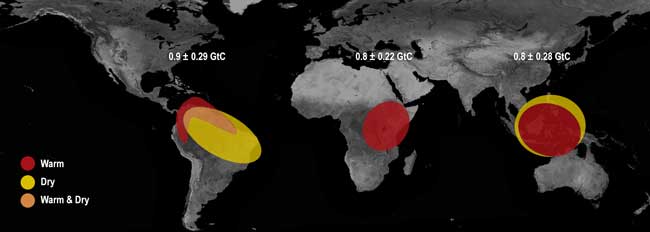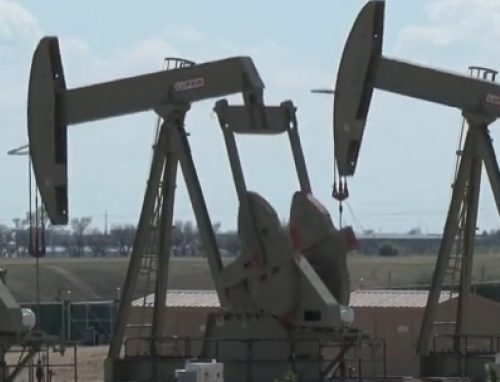Global carbon dioxide emissions from burning fossil fuels have surged to record levels following the 2008-09 global financial crisis, when a stagnant economy resulted in a temporary decline in emissions.
In their annual analysis published today (Dec. 4) in the journal Nature Climate Change, scientists working on the Global Carbon Project (GCP) say emerging economies continue to dominate growth in the world’s carbon dioxide emissions from fossil fuels, which rose 5.9 percent in 2010 and that have increased by 49 percent since 1990, the year the Kyoto Protocol established as the baseline for targets to limit emissions.
“Many saw the global financial crisis as an opportunity to move the global economy away from persistent and high emissions growth, but the return to emissions growth in 2010 suggests the opportunity was not exploited,” said the report’s lead author, Dr. Glen Peters of the Centre for International Climate and Environmental Research in Norway.
As a result of rising fossil fuel emissions, cement production, and deforestation, the atmospheric concentration of CO2, rose to 389.6 parts per million at the end of 2010, the highest level recorded in at least the last 800,000 years.
“It is clear that addressing the atmospheric increase in carbon dioxide is a global problem that needs global cooperation and a global solution,” said Dr. Gregg Marland, a co-author of the report and a research professor with Appalachian State University’s Research Institute for Environment, Energy and Economics.
Global emissions have risen an average of 3.1 percent a year from 2000 to 2010, a trend that is expected to continue in 2011.
“Global CO2 emissions since 2000 are tracking the high end of the projections used by the Intergovernmental Panel on Climate Change, which far exceed two degrees warming by 2100,” said co-author Dr. Corinne Le Quéré, director of the Tyndall Centre for Climate Change Research at the University of East Anglia in Norwich, U.K.
“Yet governments have pledged to keep warming below two degrees, a level which would avoid the most dangerous aspects of climate change,” she said.
China, the U.S., and India led the growth in emissions in 2010 with growth rates of 10.4 percent, 4.1 percent and 9.4 percent respectively, and there is no sign of abatement in the growing energy consumption of China and India. Fossil fuel combustion and cement production were at the heart of carbon dioxide emissions growth. China now accounts for 24.6 percent of global CO2 emissions and the U.S. 16.4 percent.
It has long been clear that carbon dioxide emissions from developing countries are partially from the production of goods and services that will be consumed in developed countries. But with disruptions of international trade during the Global Financial Crisis, 2009 was the first year in which global emissions for producing goods and services that will be consumed in developing countries exceeded emissions for producing goods and services to be consumed in developed countries.
The international science team that prepared the analysis tracked emissions growth in tandem with significant economic events occurring since 1960. These included the 1970s oil crisis, the U.S. savings and loan crisis, the collapse of the Federated States of the Soviet Union, the Asian financial crisis and the 2008-09 global financial crisis.
“The impact of the global financial crisis has been short-lived due to strong emissions growth in emerging economies, a return to emissions growth in developed economies, and an increase in the fossil-fuel intensity of the world economy,” said Dr. Pep Canadell with the Commonwealth Scientific and Industrial Research Organization in Australia (CSIRO), a co-author of the report and executive director of the Global Carbon Project (GCP).
Dr. Michael Raupach, also from CSIRO and a report co-author, said the short-lived impact of the global financial crisis on carbon dioxide emissions, when carbon emissions decreased 1.4 percent worldwide, was reversed by an “easing of energy prices, government investment to stimulate economic recovery and the effect of a decade of high economic growth in the developing world which propagated into a rapid global post-global financial crisis return to high emissions.”
The Global Carbon Project produces an annual report card with the latest figures on all major carbon exchanges that result from human activities. GCP’s Carbon Budget 2010 report will be available Dec. 5 athttps://www.globalcarbonproject.org/carbonbudget. CO2 emissions estimates for all countries are available athttps://cdiac.ornl.gov/trends/emis/meth_reg.html.
Source: Appalachian State University







